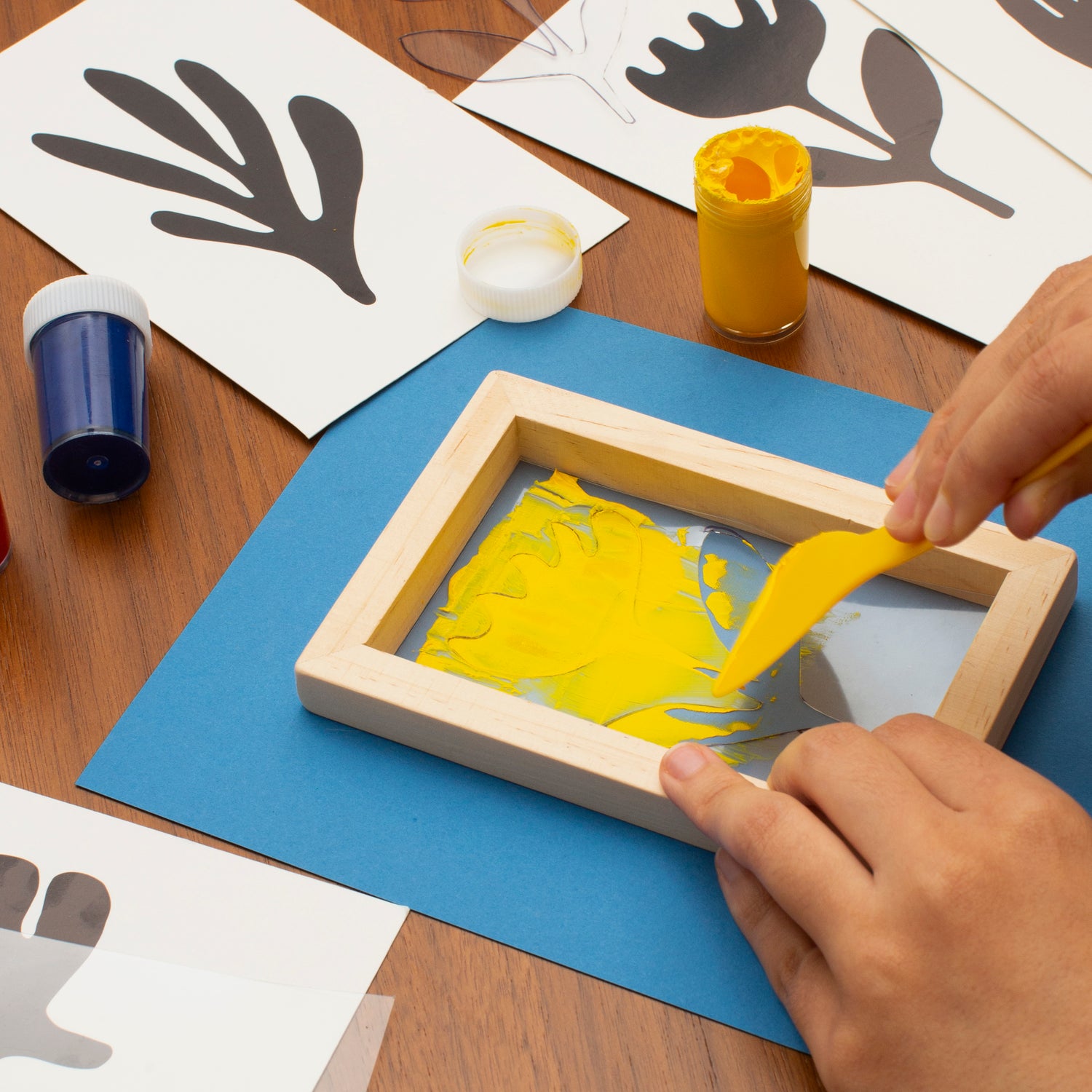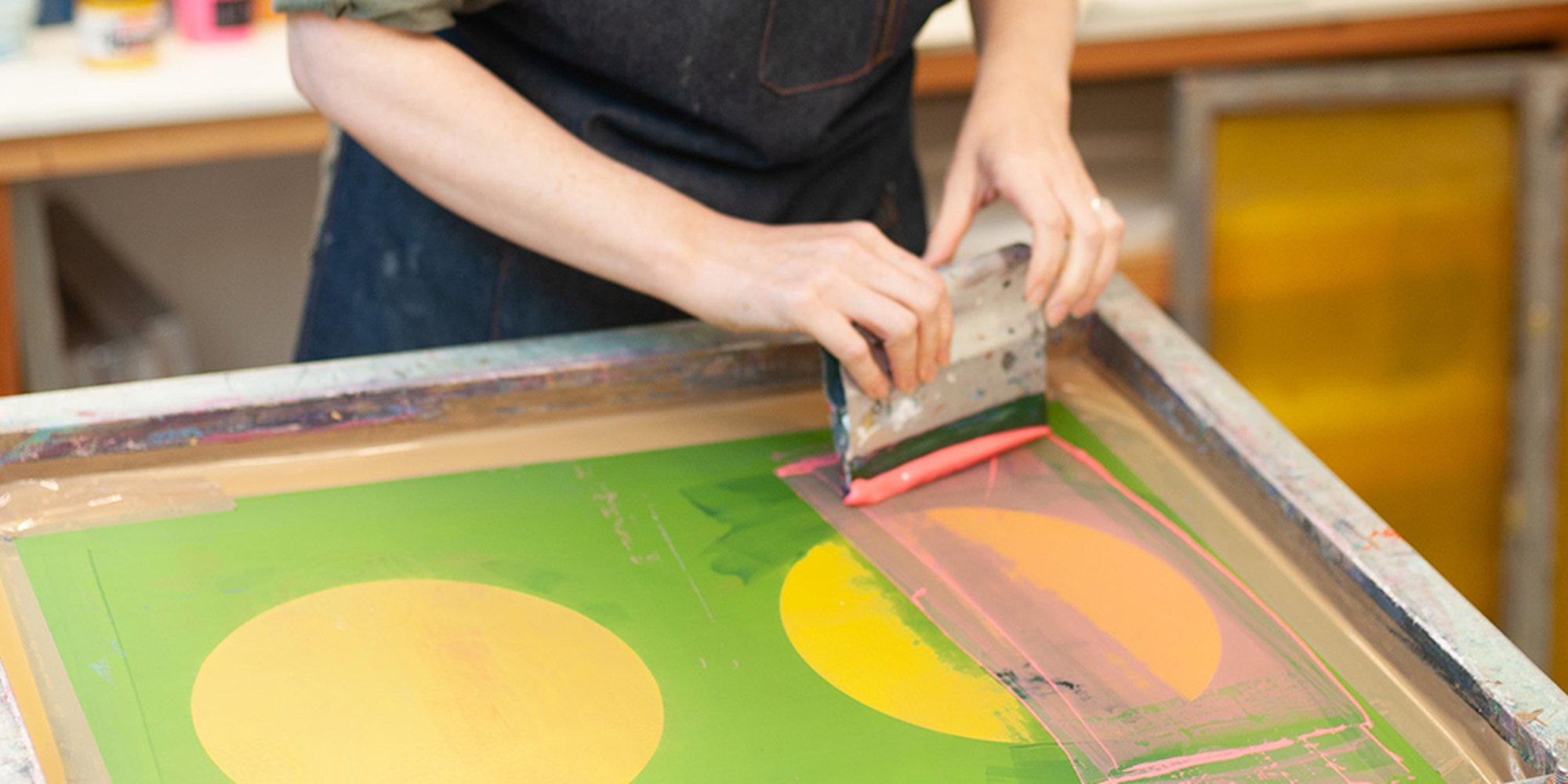ChatGPT said: Everything you need to know about reaching 10:9 Design contact for support
Discover the Different Kinds of Screen Printing Techniques for Your Following Task
Screen printing supplies a varied variety of strategies that can enhance any innovative task. From standard methods like serigraphy to contemporary advancements such as direct-to-garment printing, each strategy has its one-of-a-kind advantages. Specialty alternatives, consisting of environmentally friendly and metallic inks, present a lot more opportunities. Comprehending these methods can considerably affect the last result. Nevertheless, the challenge depends on picking the most suitable technique for particular needs and wanted impacts. What variables should one take into consideration?

The Essentials of Screen Printing
Although screen printing might appear complex, it is basically a simple procedure that entails transferring ink via a mesh screen onto different surface areas. The technique starts with the development of a pattern, which defines the style to be printed. This pattern is affixed to a mesh screen, generally constructed from polyester or nylon. When the pattern remains in place, ink is used to the screen and pushed with the mesh making use of a squeegee, resulting in the preferred pattern being published on the underlying product.
Screen printing can be done on a broad range of substrates, including paper, plastic, and textile, making it a versatile choice for numerous projects. The procedure permits vibrant shades and detailed designs, making it preferred in industries such as art, style, and advertising and marketing. Understanding these basics gears up individuals with the fundamental understanding called for to discover even more sophisticated strategies in screen printing.
Traditional Screen Printing Techniques
Traditional screen printing techniques have actually been used for centuries, maintaining the craftsmanship and creativity of this technique. This technique uses a mesh screen to transfer ink onto a substrate, such as fabric or paper, allowing for lively and lasting designs. The process starts with producing a stencil, which obstructs particular areas of the screen to control where the ink will certainly be used.
One popular method is serigraphy, frequently used for creative prints and restricted versions. One more is using water-based inks, which are green and supply a soft feel on textiles - 10:9 Design LLC Company. In addition, traditional approaches can include hand-operated printing, where artisans apply ink with a squeegee, making certain precision and interest to information
These strategies continue to be valued in the industry for their tactile high quality and the special structures they produce, interesting both developers and customers that appreciate the heritage of screen printing.
Digital Screen Printing Innovations
As the demand for faster manufacturing and customization in the printing industry has surged, digital screen printing technologies have actually emerged as a game-changer. This modern technology mixes traditional screen printing methods with digital procedures, allowing for fast prototyping and detailed designs that were previously challenging to accomplish. One substantial development is the introduction of direct-to-garment (DTG) printing, which assists in high-quality, full-color prints on various textiles without the need for displays. In addition, improvements in ink formulas have actually caused eco-friendly alternatives that maintain dynamic colors while minimizing environmental impact. Making use of automated systems additionally enhances manufacturing, reducing labor expenses and improving precision. These developments not only deal with small set orders and tailored layouts yet also allow for quicker turn-around times, making them excellent for businesses concentrated on conference consumer needs in a hectic market. Digital screen printing, consequently, stands for an essential advancement in the domain name of printing strategies.
Specialized Screen Printing Techniques
Exploring specialized screen printing techniques reveals a diverse range of strategies that press the limits of creativity and capability in the printing market. Among these, glow-in-the-dark inks offer an unique aesthetic impact, making designs come to life in low-light conditions. Metal inks, understood for their sparkling coating, add a touch of deluxe to printed materials. Another innovative technique is discharge printing, which gets rid of color from the textile rather than adding ink, leading to a soft, classic feel. High-density printing produces a raised appearance externally, enhancing responsive engagement. Furthermore, water-based inks are gaining appeal for their vibrant colors and lowered environmental influence. Each of these specialized methods accommodates details design demands, enabling artists and brands to produce standout items that resonate with their audiences. By leveraging these techniques, businesses can raise their screen printing tasks to new heights, making certain memorable impressions.
Eco-Friendly Screen Printing Options
Environment-friendly screen printing choices are obtaining traction as the market moves in the direction of sustainability. Sustainable ink selections and using eco-friendly materials are vital parts in reducing the environmental influence of the printing process. By taking on these practices, screen printers can add to a more lasting future while maintaining high-quality outcomes.
Lasting Ink Choices

Biodegradable Materials Use
As the screen printing industry develops, the consolidation of biodegradable materials is coming to be significantly vital for environmentally aware methods. Designers and suppliers are now exploring inks and substratums made from all-natural, renewable energies that break down much more successfully than standard equivalents. These eco-friendly choices reduce plastic waste and lessen ecological influence, aligning with the expanding need for sustainable products.
Typical examples include water-based inks and organic cotton fabrics, both of which minimize hazardous chemicals and advertise eco-friendliness. Brand names that embrace these materials usually improve their market appeal, bring in customers who prioritize sustainability. As understanding of ecological issues continues to rise, the change in the direction of biodegradable products in screen printing is likely to obtain momentum, fostering a greener sector requirement.
Selecting the Right Technique for Your Job
Just how can one identify the most appropriate screen printing technique for a certain task? The choice pivots on several factors, including the product to be published on, the complexity of the layout, and the preferred production quantity - 10:9 Design Screen Printing Texas. Direct-to-garment printing is perfect for intricate layouts with many colors, while standard screen printing excels for bigger runs of simpler graphics.
Furthermore, factor to consider of the end-use of the printed product is important. For exterior applications, techniques that offer durability and weather resistance, such as plastisol ink, may be favored. Conversely, environmentally-conscious jobs might take advantage of water-based inks or naturally degradable products.
Inevitably, understanding the job's one-of-a-kind requirements enables an enlightened choice, guaranteeing both visual allure and useful durability. By reviewing style intricacy, product compatibility, and production scale, one can properly select the most suitable screen printing method to meet their job's objectives.
Regularly Asked Questions
What Is the History of Screen Printing?
Screen printing came from ancient China around 1000 AD, advancing via Japan and Europe. By the 20th century, it became prominent in business art and style, revolutionizing just how designs were produced and distributed internationally.

How Do I Prepare Art Work for Screen Printing?
To prepare artwork for screen printing, one have to ensure high resolution, make use of an appropriate shade setting, create different layers for each shade, and convert text to outlines, ensuring compatibility with the printing procedure and wanted result.
What Products Are Finest for Screen Printing?
The most effective materials for screen printing consist of premium inks, durable displays, and suitable substrates like cotton, polyester, or blends. In addition, using proper solution and squeegees can improve the printing procedure and final outcomes.
Can I Evaluate Print in your home?
Yes, screen printing at home is feasible. With the right materials, arrangement, and techniques, individuals can produce top quality prints. Nonetheless, careful consideration of work space and equipment is necessary for successful results.

What Prevail Mistakes in Screen Printing?
Common errors in screen printing include inappropriate 10:9 Design contact direct exposure times, poor ink uniformity, misalignment of displays, insufficient cleansing of products, and disregarding to check prints. These errors can endanger the high quality and accuracy of the end product.
Screen printing may seem facility, it is essentially a straightforward procedure that includes transferring ink via a mesh screen onto different surface areas. As the demand for faster production and personalization in the printing industry has actually surged, electronic screen printing advancements have actually arised as a game-changer. Exploring specialized screen printing approaches exposes a varied range of strategies that push the boundaries of creative thinking and functionality in the printing sector. The best products for screen printing include top notch inks, sturdy displays, and suitable substratums like cotton, polyester, or blends (10:9 Design Embroidery). Typical errors in screen printing include inappropriate direct exposure times, insufficient ink consistency, imbalance of screens, inadequate cleansing of materials, and ignoring to test prints